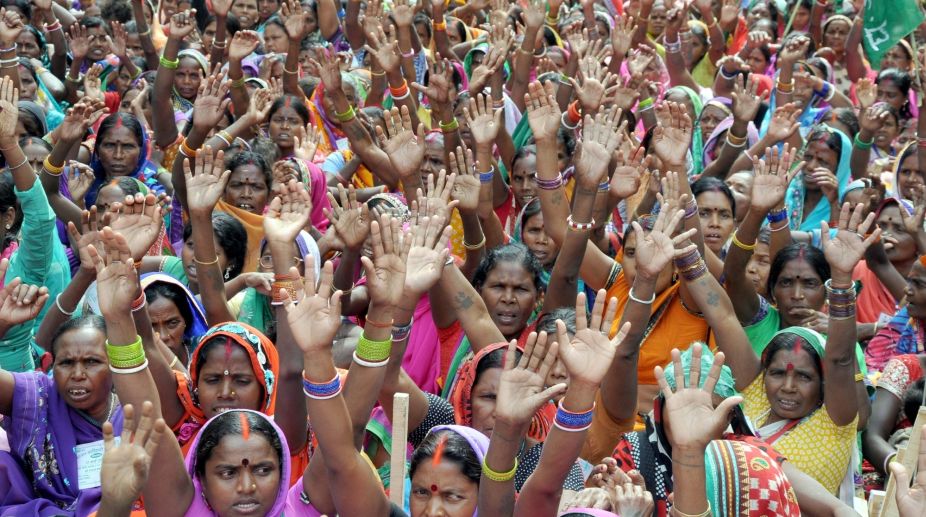The Tata Trusts, the largest public charity that owns over 66 per cent in the Tata Group, has earmarked around Rs 500 crore towards livelihood enhancement of the tribals in four states over the next five years under its flagship scheme Cini.
Under Cini, or Collectives for Integrated Livelihood Initiatives, the Trusts has already spent Rs 25 crore of the Rs 119 crore budgeted for the project in the first phase, Ganesh Neelam, executive director of Cini, told PTI in Mumbai.
Advertisement
The project was launched under the personal initiative of chairman Ratan Tata in April 2015.
Neelam, who also heads the north and central zones of the Trusts, said the organisation, as a whole, will be investing close to Rs 500 crore over the next five years to fund more such projects. Some of this amount will have to be raised by the charity.
Cini aims to cover 1,01,000 tribal households in four states — Jharkhand, Odisha, Maharashtra and Gujarat — and make them lakhpatis by 2020 by trebling their income from farming and animal husbandry to Rs 1.2 lakh per annum.
In these four states, Cini covers seven blocks in five districts of Jharkhand (East Singhbhum, Hazaribag, Deoghar, Dhumka and Khunti); two blocks in one district of Odisha (Keonjhar); eight blocks in three districts of Gujarat (Mahisagar, Sabarkhantha and Dahod); and two blocks in two districts of Maharashtra (Nadurbar and Dhule).
These four states are home to over 65 per cent of the nation’s tribal population, Neelam said when asked why only these four states have been covered under its project.
“Nearly half-way into the project, we’ve already created 15,000 lakhpati kisans across these four states,” he said, adding the number of households that got lifted out of poverty through the high-value agriculture and piggery under the initiative stands at 41,313 now.
Neelam said the livelihood enhancement initiative is aimed at trebling their income to Rs 1.2 lakh a year and is based on a four-pronged strategy – high value farming; livestock (primarily piggery and goats); non-timber forest produce like lac and horticulture.
The initiative seeks to invest Rs 65,000 into each household of which the Tata Trusts will invest Rs 20,000 each and the rest will come through other agencies, including government grants but arranged through/by the Trusts.
He sounded very confident of meeting the overall target of creating over 1.1 lakh lakhpati farmers (by 2020) as the traction in terms of adoption of their methods has been gaining better momentum.
“Having already sown the seeds of change among a large number of farmers, who have become the brand ambassadors of the project, our work has become much easier now.”
Total households engaged in agriculture stands at 45,740, who do at least two seasons now, while the total additional area brought under irrigation is about 4,973 acres, he said, adding total market-linked vegetable production clusters created stands at 53.
While on a recent visit to the tribal-dominated Jharkhand, where Cini seeks to cover over 30,000 households, Cini state manager P Sirshendu said the success of the scheme has so far been beyond their expectation.
He said in FY17 alone, more than 27,310 tribal households, spanning 429 villages and consisting of over 2020 self-help groups (SHGs), have benefited from the project.
This agency has visited five villages in the Khunti district and met with dozens of farmers who do soilless farming of tomatoes and some other green vegetables.
In a village in Khunti, there already are seven lakhpati farmers – all women– who earn more Rs 1 lakh from farming and piggery. They said before they joined Cini initiatives, their lives were miserable and fully depended on the mercy of rain gods and middlemen.
In another village, which is Christian-dominated and whose residents are into cultivation of lac – a natural adhesive used in industries – farmers said their lives have changed very radically after joining the Cini project.
At another village, a farmer-turned-entrepreneur runs a hi-tech polyhouse nursery to grow soilless veg saplings.
The farmer said he has invested Rs 7 lakh in setting up the nursery of which Rs 1 lakh was his contribution and the rest funded by the project with a condition that first he has to meet the demand from nearby villages only. He said within two years, he has recovered his investment.
Cini also involves irrigation (drip and mulching), setting up solar pumps for irrigation, education and sports, especially hockey which includes a world-class hockey training academy at Jamshedpur.
The academy has set a target of selecting at least 4-5 kids from the region to play in the Hockey Junior World Cup to be held in 2020.
Its education initiative has resulted in dropout rate at Cini schools falling to 2-5 per cent against the state average of 12 per cent, while attendance has shot up to over 80 per cent.











